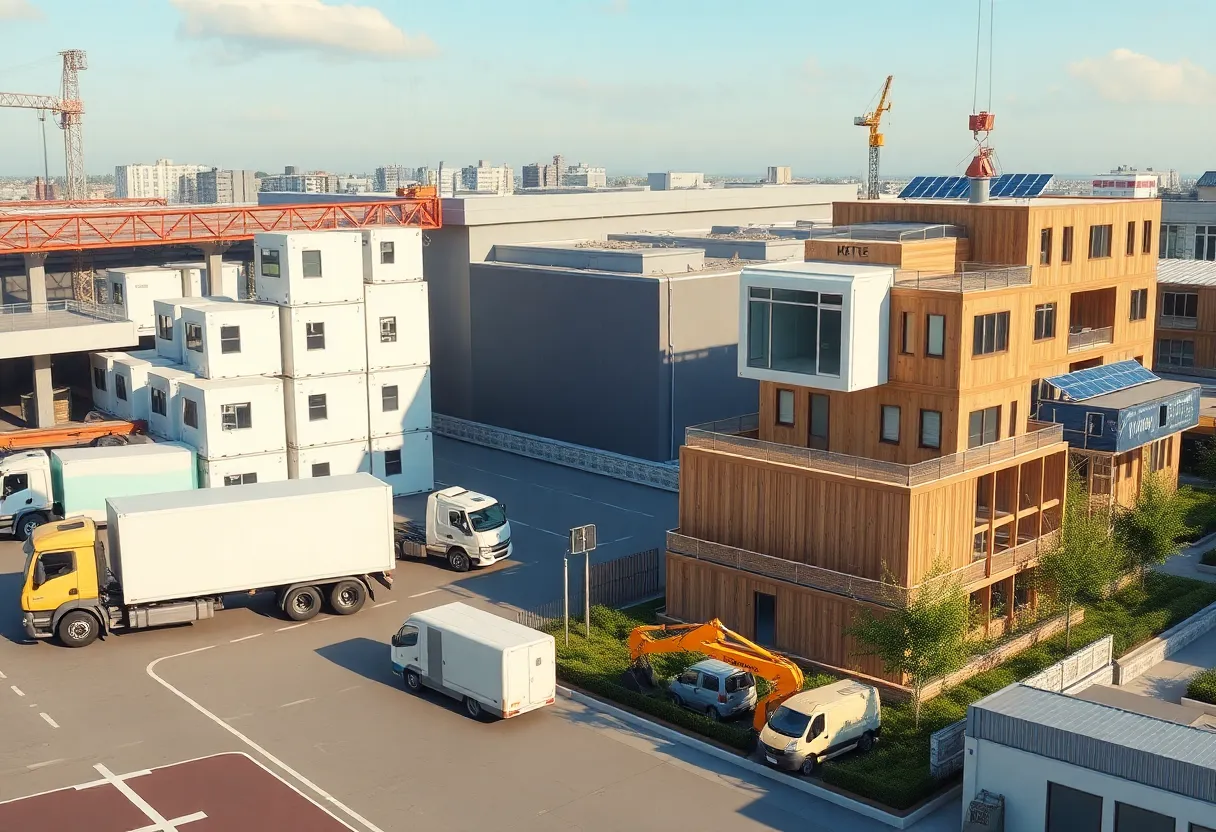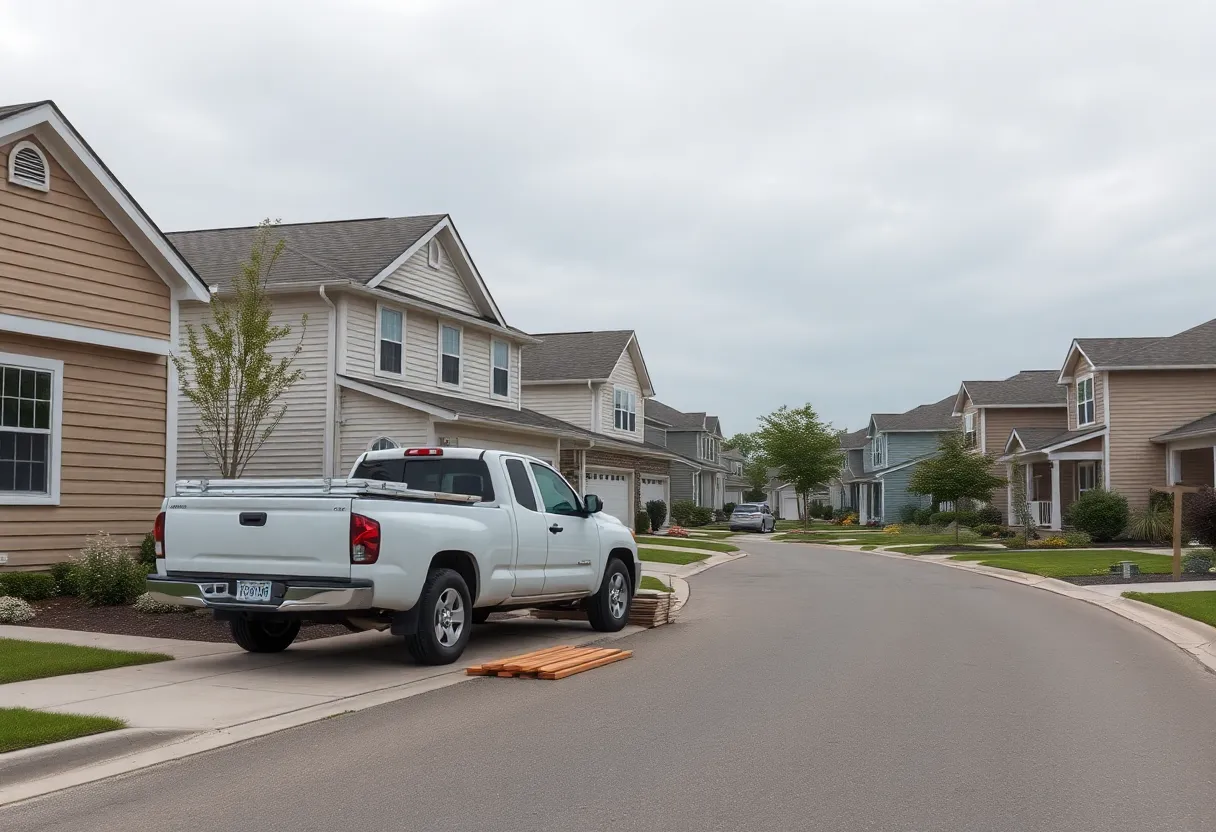Global, August 22, 2025
News Summary
A broad study of the modular construction sector covering 700+ companies across 50+ countries finds rapid expansion and clear profit patterns. Companies that combine factory manufacturing with on‑site assembly report substantially higher EBITDA than manufacturers-only players. Modular methods reduce on‑site labor, shorten schedules, and cut waste when systems and logistics are optimized. Cities are testing zero‑emission sites using electric machinery and battery power, while architects deliver near net‑zero buildings that pair off‑site construction with low‑carbon site operations. Success is tied to repeatable building systems, value‑chain control, digital integration and careful, demand‑led scaling.
Modular construction surges as integrated players show higher margins; Oslo pilots zero-emission construction and Snøhetta opens net-zero Vertikal Nydalen
A recent modular-construction study analyzes a global field of more than 700 firms across over 50 countries, looking at how components manufactured off-site and assembled on-site are reshaping the building industry. The research outlines a highly fragmented market, with a wide range of players from long-standing firms to startups founded in the last two decades. It also highlights how different business models, building systems, and material choices relate to profitability, and it points to notable projects and pilots that illustrate a track toward sustainability and efficiency.
Key findings show that modular construction encompasses 3D volumetric modules, 2D panels, and bathroom pods, while explicitly excluding certain prefabricated elements or precut material. The analysis considers buildings intended for permanent use and mentions some insights from temporary, rental modules. A proprietary database underpins the study, including firms of varying ages and revenue sizes. The market remains highly fragmented: a small share of players generate large revenues, while the majority operate with more modest turnovers. Enterprise margins vary widely by archetype, value-chain position, and complexity of the project.
One notable pattern is that vertically integrated firms—those that control both manufacturing and on-site assembly—tend to achieve stronger margins. In particular, firms that combine modular manufacturing with assembly report EBITDA in the approximate range of 15–20%, compared with around 5% for those focused only on manufacturing. The study also identifies a benefit for rental or mixed sales-rental models, which tend to improve factory utilization and EBITDA, thanks to diversified demand and better capacity management. In terms of market structure, around 60% of players operate in single-family or similar low-density segments, while profitability tends to be higher for more specialized assets such as hotels or healthcare facilities.
Material choices show a division, globally: roughly 42% of players focus on steel, 38% on timber, and about 11% on concrete. Among product types, most firms produce either 2D panels or 3D volumetric modules, with a slight margin advantage for 3D modules. Project complexity varies, but a majority target low to medium complexity. Low-complexity projects account for roughly half of players and often deliver higher margins, thanks to standardization and higher factory efficiency.
The study describes two primary commercial models: a project-based sales approach for permanent buildings, and rental models for temporary uses like site offices or portable classrooms. Rental or combined models are associated with better factory utilization and higher margins, underscoring the importance of balancing output across markets. Across geographies, most modular firms remain locally focused, with smaller shares scaling regionally or globally. The path to broader globalization is framed by digital standards, cross-country code harmonization, and logistics that support longer-distance operations.
Beyond profitability, the research emphasizes three common traits of successful modular players: (1) a robust building system at the core; (2) control over the value chain; and (3) disciplined, focused scaling. A building system encompasses the rules, processes, components, and procurement paths for constructing a building, and it is most effective when centered on a single structural material and supported by digital tools that link design, manufacturing, and on-site assembly. Technologies such as BIM, parametric modeling, and 3D configurators are highlighted as enablers of standardized yet adaptable solutions. Companies that invest in their building systems and tightly coordinate with suppliers and contractors tend to perform better over time.
In parallel with these industry patterns, sustainability and circular construction threads run through the discussion. Circular strategies emphasize reuse, controlled dismantling, and upcycling of materials, with digital “material passports” helping track components for future reuse. Design approaches favor modularity, reversible joints, and standardization to support reuse and minimize waste. City-level sustainability goals, including zero-emission construction sites, are cited as drivers for adopting electric machinery, digital site management, and off-site fabrication where possible. These themes intersect with the broader push toward productivity gains and cost reductions enabled by digital platforms and automated processes.
Sustainability, urban pilots, and net-zero ambitions
In Oslo, a pilot site demonstrated a zero-emission construction approach where all on-site machinery ran on electricity. The project reported significant environmental gains, including diesel reductions and substantial CO2 savings, while also delivering quieter operations and improved on-site communication. Oslo aims for zero-emission municipal construction sites by 2025 and seeks to extend zero-emission requirements to all construction work by 2030. Other Nordic cities have pursued similar pilots, illustrating how electrification, logistics planning, and digital monitoring can transform construction practices. Where available, grid-powered solutions and battery-based systems are used to offset the higher upfront costs of electric equipment, with payback influenced by fuel savings and productivity gains.
Elsewhere, the urban renewal and sustainability narrative is being supported by projects that blend environmental performance with design excellence. One notable Oslo project demonstrates a net-zero ambition in heating, cooling, and ventilation through a combination of geothermal wells, solar PV, natural ventilation, and energy-efficient building envelopes. The approach leverages exposed concrete cores, heat-absorbing walls, and strategically angled façades to optimize thermal mass, air movement, and daylight. The goal is to reduce emissions across materials, transportation, and energy use while preserving interior space and flexibility for future changes.
Across broader market dynamics, off-site fabrication and modular design are positioned as tools to reduce waste, shorten construction timelines, and improve safety. The integration of digital tools with on-site execution supports better planning, faster iterations, and more consistent quality control. While electric equipment and modular production offer clear advantages, costs, logistics, and regulatory considerations remain important factors shaping adoption. The overarching message remains: modular construction has significant room to grow, but success hinges on disciplined scaling, robust building systems, and coordinated value-chain partnerships.
Key project highlights and regional implications
The exploration of a net-zero-focused project in Oslo and the emergence of advanced modular solutions reflect a broader trend toward sustainable urban development. As cities increasingly prioritize efficiency, resilience, and healthy indoor environments, modular construction and digital optimization are likely to play larger roles in future building programs. The combination of standardized processes, circular design principles, and cross-border collaboration is expected to influence how projects are planned, financed, and delivered in the years ahead.
Frequently Asked Questions
What is modular construction?
Modular construction involves manufacturing building components off-site in a factory and assembling them on-site to create permanent or temporary structures. It often uses modules, panels, and other prefabricated elements designed for repeatable production and faster assembly.
What did the study find about market structure and margins?
The study describes a highly fragmented market with a wide range of firm sizes. Integrated firms that combine manufacturing and on-site assembly tend to report higher EBITDA (around 15–20%) than manufacturers operating alone (roughly 5%). Specialization, project type, and complexity influence margins, with hospitality and specialized assets often showing higher profitability than residential segments.
How do rental models affect profitability?
Rental models, or combinations of sales and rental, can improve factory utilization and EBITDA by balancing production across markets and reducing idle capacity. This approach helps firms manage demand variability and optimize asset use.
What is notable about Oslo’s zero-emission pilot?
The Oslo pilot showcased electric on-site machinery with substantial emissions reductions and quieter operation. The city aims for zero-emission municipal construction sites by 2025 and by 2030 for all construction work, using renewable energy grids and targeted procurement to drive adoption.
What is Vertikal Nydalen and its net-zero features?
Vertikal Nydalen is a mixed-use building in Oslo designed to reach net-zero energy use for heating, cooling, and ventilation. It employs geothermal wells, solar panels, natural ventilation, and an energy-efficient envelope to achieve significant reductions in lifecycle CO2 and energy demand.
| Key feature | Description |
|---|---|
| Definition | Off-site manufacturing of building components with on-site assembly, including 3D modules, 2D panels, and bathroom pods. |
| Market structure | Highly fragmented with 700+ firms; a minority generate large revenues while many operate under €50 million annual turnover. |
| Margin dynamics | Integrated manufacturing+assembly tends to yield higher EBITDA (≈15–20%) than manufacturing-only (≈5%). |
| Product types | Two main product types: 2D panels and 3D volumetric modules; 3D modules show slightly higher margins on average. |
| Project complexity | Low to medium complexity projects are most common and often offer higher margins due to standardization. |
| Commercial models | Project-based sales are common; rental or combined models improve utilization and profitability. |
| Materials | Largest shares focus on steel (42%), timber (38%), with concrete at about 11%. |
| Geographic reach | Most firms operate locally; regional and global scales are growing, aided by standardization and cross-border logistics. |
| Building system | Successful players center on a robust building system, maintain value-chain control, and pursue focused scaling. |
| Sustainability | Circular strategies and digital tools enable reuse, upcycling, and waste reduction in line with net-zero goals. |
Deeper Dive: News & Info About This Topic
Additional Resources
- McKinsey: Putting the pieces together — Unlocking success in modular construction
- Wikipedia: Modular construction
- BBC Future: The Scandinavian way to zero‑carbon construction
- Encyclopedia Britannica: Zero‑carbon construction (search)
- Designboom: Snøhetta Vertikal Nydalen, Oslo (Apr 27, 2024)
- Google Search: Snohetta Vertikal Nydalen Oslo
- Electrive: Oslo’s first zero‑emissions construction site in action
- Google News: zero‑emission construction site Oslo
- Noticias Ambientales: Circular construction — From use‑and‑throw‑away to reuse and transform buildings
- Google Scholar: circular construction reuse transform buildings





